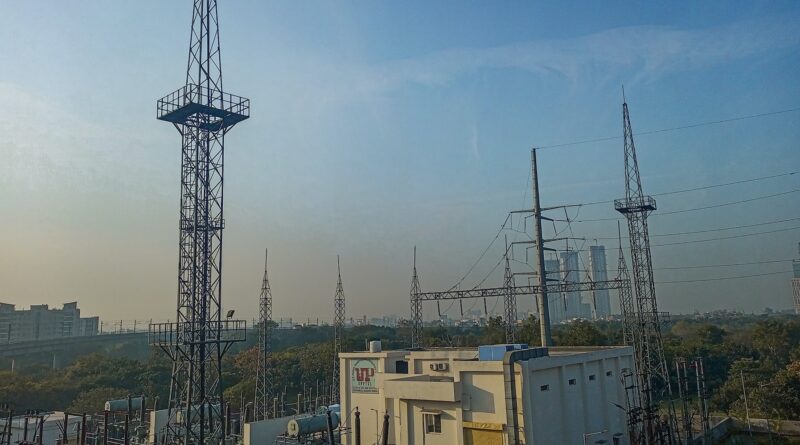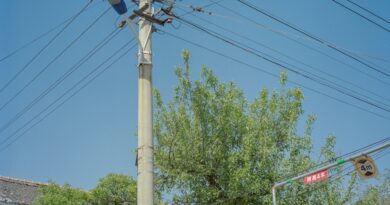Stay Safe and Sound: Expert Tips for Effective Electrical Safety Inspections in Faridabad
Introduction
Electrical safety is of paramount importance to ensure the well-being of individuals and the smooth operation of electrical systems. In Faridabad, a bustling city in India, it becomes even more crucial to prioritize electrical safety due to the high population density and rapid urbanization. This article aims to provide expert tips for conducting effective electrical safety inspections in Faridabad. By following these guidelines, you can minimize the risk of electrical hazards and promote a safer environment for both residential and commercial spaces.
Table of Contents
- Understanding the Importance of Electrical Safety Inspections
- Preparing for an Electrical Safety Inspection
- Assessing Electrical Wiring and Connections
- Evaluating Electrical Fixtures and Appliances
- Checking the Electrical Panel and Circuit Breakers
- Examining Grounding and Bonding Systems
- Inspecting Surge Protection Devices
- Ensuring Proper Outlet and Switch Installation
- Verifying Safety Measures for Outdoor Electrical Installations
- Testing and Maintaining Smoke Alarms and Carbon Monoxide Detectors
- Reviewing Fire Safety Procedures
- Identifying Signs of Electrical Problems
- Addressing Electrical Safety Concerns in Old Buildings
- Promoting Electrical Safety Education and Awareness
- Conclusion
1. Understanding the Importance of Electrical Safety Inspections
Electrical safety inspections are crucial for identifying potential hazards and ensuring compliance with safety standards. These inspections help prevent electrical accidents, fires, and electrical failures, thereby safeguarding lives and property. Regular inspections contribute to the early detection of electrical issues, allowing for prompt repairs and maintenance.
2. Preparing for an Electrical Safety Inspection
Before conducting an electrical safety inspection, it is essential to gather the necessary tools and equipment, such as a voltage tester, electrical tape, and a flashlight. Additionally, ensure that the power supply is turned off to eliminate the risk of electrical shocks.
3. Assessing Electrical Wiring and Connections
Inspecting electrical wiring is a fundamental aspect of safety inspections. Examine the condition of the wires for signs of fraying, damage, or wear. Check if the wiring is properly insulated and secured. Pay attention to any loose connections or exposed wires, as they pose a significant risk of electrical accidents.
4. Evaluating Electrical Fixtures and Appliances
During the inspection, carefully examine all electrical fixtures and appliances. Look for any signs of overheating, such as discoloration or burning smells. Check the condition of power cords and plugs, ensuring they are not damaged or frayed. Replace faulty fixtures and appliances promptly.
5. Checking the Electrical Panel and Circuit Breakers
The electrical panel is the heart of the electrical system. Inspect the panel for any loose connections, corrosion, or signs of overheating. Ensure that the circuit breakers are functioning correctly and labeled appropriately. Adequate labeling allows for quick identification and isolation of specific circuits during emergencies or maintenance.
6. Examining Grounding and Bonding Systems
Proper grounding and bonding are vital for electrical safety. Inspect the grounding system to ensure it is adequately installed and connected. Faulty grounding can lead to electric shock hazards and damage sensitive electronic devices. Similarly, check the bonding of metal components to prevent the buildup of electrical charges and minimize the risk of electrical shock.
7. Inspecting Surge Protection Devices
Surge protection devices (SPDs) safeguard electrical equipment against voltage spikes and surges. During the inspection, assess the condition of SPDs and verify their effectiveness. Replace outdated or damaged surge protectors to maintain optimal protection against electrical disturbances.
8. Ensuring Proper Outlet and Switch Installation
Improperly installed outlets and switches can pose significant safety risks. Inspect these components to ensure they are securely mounted, properly wired, and free from damage. Consider the specific requirements for different areas, such as wet locations or outdoor installations, and ensure compliance with applicable codes and regulations.
9. Verifying Safety Measures for Outdoor Electrical Installations
Outdoor electrical installations face unique challenges due to exposure to weather conditions. Inspect outdoor outlets, lighting fixtures, and other electrical components for signs of wear, water intrusion, or damage. Ensure that all outdoor installations are properly grounded and adequately protected from moisture and physical impact.
10. Testing and Maintaining Smoke Alarms and Carbon Monoxide Detectors
Smoke alarms and carbon monoxide detectors are crucial for early detection of potential hazards. Test these devices regularly to ensure they are in proper working condition. Replace batteries as needed and replace outdated detectors according to manufacturers’ recommendations.
11. Reviewing Fire Safety Procedures
Electrical safety is closely linked to fire safety. Conduct a thorough review of fire safety procedures, including the availability and accessibility of fire extinguishers, evacuation plans, and emergency lighting systems. Regularly conduct fire drills to familiarize occupants with the evacuation process and enhance their preparedness.
12. Identifying Signs of Electrical Problems
Being able to recognize signs of electrical problems is essential for early intervention. Educate yourself and others about common warning signs, such as frequent tripping of circuit breakers, flickering lights, or unusual electrical noises. Promptly address these issues to prevent further damage or hazards.
13. Addressing Electrical Safety Concerns in Old Buildings
Older buildings may have outdated electrical systems, which can increase the risk of electrical hazards. If you reside or work in an older building, consider hiring a qualified electrician to conduct a comprehensive inspection and upgrade the electrical infrastructure if necessary. This will help bring the building up to current safety standards.
14. Promoting Electrical Safety Education and Awareness
Creating awareness about electrical safety is vital for preventing accidents and promoting a culture of safety. Organize workshops, seminars, or informational sessions to educate individuals about electrical safety best practices. Encourage people to report any electrical issues promptly and provide resources for further information.
15. Conclusion
Effective electrical safety inspections are indispensable for mitigating electrical hazards and ensuring a safe environment in Faridabad. By following the expert tips outlined in this article, you can proactively address potential risks, prevent accidents, and protect lives and property. Prioritize electrical safety and make it an integral part of your daily routine.
Frequently Asked Questions
1. How often should electrical safety inspections be conducted? Electrical safety inspections should be conducted at least once every year to ensure ongoing safety and compliance.
2. Can I perform electrical safety inspections on my own? While basic visual inspections can be done by individuals, it is advisable to hire a qualified electrician for thorough electrical safety inspections.
3. Are electrical safety inspections only necessary for commercial properties? No, electrical safety inspections are essential for both residential and commercial properties to ensure the safety of occupants and the integrity of the electrical system.
4. What should I do if I identify electrical hazards during an inspection? If you identify electrical hazards during an inspection, it is crucial to take immediate action by disconnecting the power supply and contacting a licensed electrician for repairs.
5. How can I promote electrical safety in my community? You can promote electrical safety in your community by organizing educational events, sharing safety tips, and encouraging regular inspections and maintenance.




